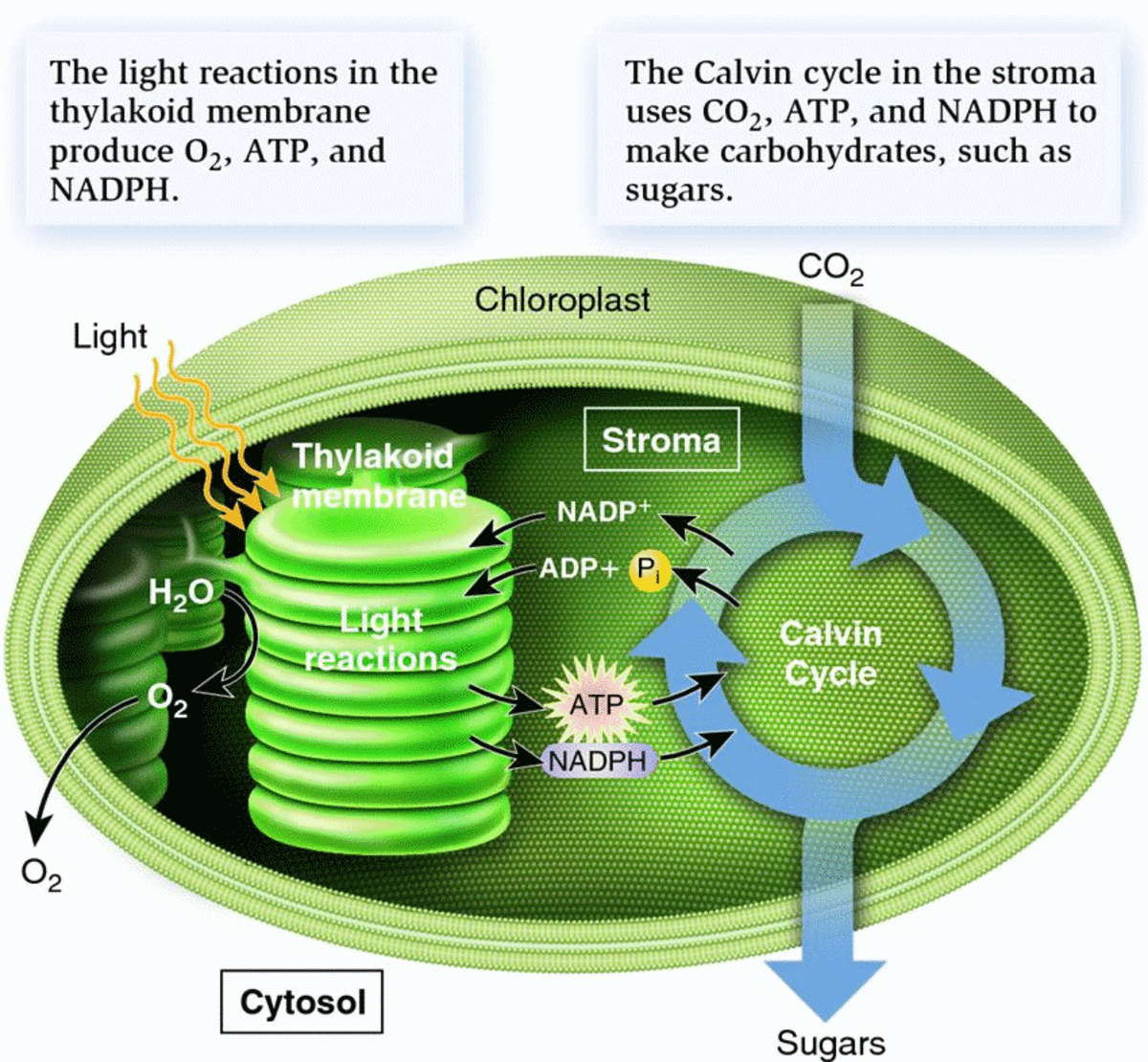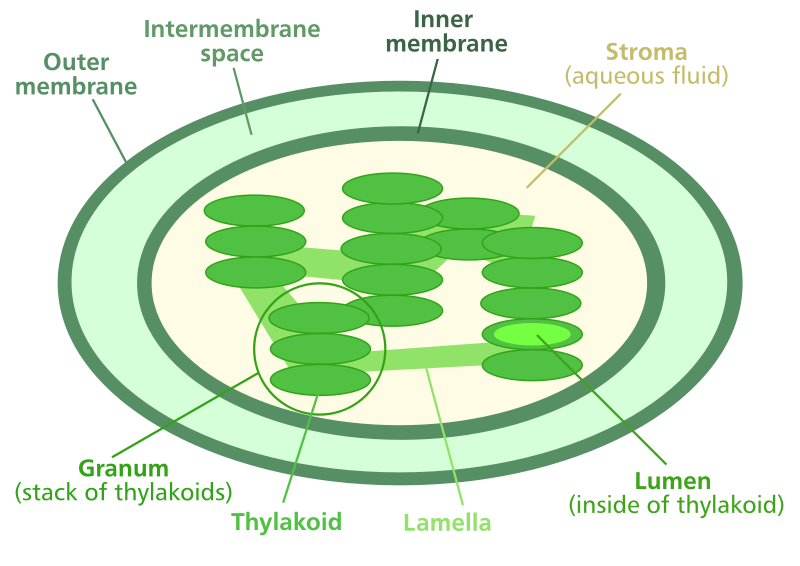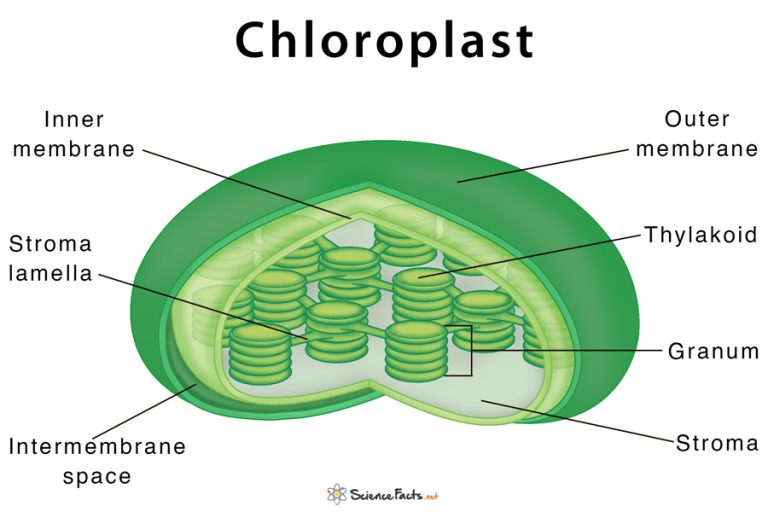What does stroma do in chloroplasts? The answer lies within the very heart of the chloroplast, a vital organelle in plant cells responsible for photosynthesis. Stroma, the gel-like matrix that fills the chloroplast, is far from inert. It’s a dynamic environment teeming with activity, a crucial player in the intricate process of capturing sunlight and transforming it into energy.
Think of the stroma as a bustling workshop where the magic of photosynthesis unfolds. It houses enzymes that catalyze key reactions, provides a platform for the Calvin cycle, and facilitates the movement of molecules between different chloroplast compartments. Its composition and structure are finely tuned to ensure the smooth operation of the chloroplast, a testament to the efficiency and complexity of nature’s design.
The Stroma: What Does Stroma Do In Chloroplast

The stroma is the thick fluid that fills the inner space of a chloroplast, surrounding the thylakoid membranes. It’s like the cytoplasm of the cell, but with a special twist, packed with its own unique set of ingredients.
Composition of the Stroma
The stroma is a complex mixture of enzymes, proteins, and other molecules that are essential for photosynthesis. It’s a bit like a bustling factory floor, where all the ingredients and machinery are ready to get to work.
- Water: The stroma is mostly water, which acts as a solvent for all the other molecules. Think of it as the “air” of the chloroplast, allowing everything to move around freely.
- Enzymes: The stroma contains a variety of enzymes, which are proteins that catalyze specific chemical reactions. These enzymes are like the “workers” of the factory, driving the process of photosynthesis.
- Ribosomes: Stroma contains ribosomes, which are the sites of protein synthesis. These ribosomes are like the “assembly lines” of the chloroplast, producing the proteins needed for photosynthesis.
- DNA: Chloroplasts have their own DNA, called chloroplast DNA (cpDNA). This DNA contains the genetic information for making some of the chloroplast’s proteins. It’s like the “blueprint” for the factory, telling it what to build.
- Starch Granules: The stroma stores starch granules, which are the primary form of carbohydrate produced by photosynthesis. Think of them as the “finished product” of the factory, ready to be used or stored for later.
Role of the Stroma in Chloroplast Functions
The stroma is the site of the Calvin cycle, the light-independent reactions of photosynthesis. It’s like the “assembly line” of the factory, taking the energy produced by the light-dependent reactions and converting it into sugar.
- Carbon Fixation: The Calvin cycle uses carbon dioxide from the atmosphere to produce glucose, the main source of energy for plants. This is like the “manufacturing” process of the factory, taking raw materials and turning them into a useful product.
- Energy Conversion: The stroma uses ATP and NADPH produced by the light-dependent reactions to power the Calvin cycle. This is like the “power source” of the factory, providing the energy needed to run the machinery.
- Regulation of Photosynthesis: The stroma plays a crucial role in regulating the rate of photosynthesis, ensuring that the process is efficient and doesn’t get overwhelmed. It’s like the “control room” of the factory, making sure everything runs smoothly.
Stroma vs. Cytoplasm
The stroma and cytoplasm are both fluid-filled compartments within cells, but they have some key differences.
- Location: The stroma is found within chloroplasts, while the cytoplasm is the fluid that surrounds the organelles within a cell. Think of it as the “outside” of the factory, while the stroma is the “inside”.
- Composition: The stroma contains specific enzymes and molecules involved in photosynthesis, while the cytoplasm contains a wider range of molecules and enzymes involved in various cellular processes. It’s like the “factory” having its own specific set of tools and equipment, while the “outside” has a wider range of tools for different tasks.
- Functions: The stroma is primarily involved in photosynthesis, while the cytoplasm is involved in a wide range of cellular processes, including protein synthesis, metabolism, and cell division. It’s like the “factory” being focused on one specific product, while the “outside” has many different functions.
Stroma’s Role in Photosynthesis

The stroma, the thick fluid within the chloroplast, is not just a passive environment. It’s the bustling heart of the light-independent reactions, where the magic of carbon fixation and sugar synthesis happens.
The Calvin Cycle: The Stroma’s Core Business, What does stroma do in chloroplast
The Calvin cycle, the primary pathway for carbon fixation in photosynthesis, takes place entirely within the stroma. This cycle is a series of enzymatic reactions that use the energy stored in ATP and NADPH (generated during the light-dependent reactions) to convert carbon dioxide into glucose.
- Carbon Fixation: The Calvin cycle starts with the incorporation of carbon dioxide into an organic molecule, RuBP (ribulose bisphosphate), by the enzyme Rubisco. This step is crucial for capturing carbon from the atmosphere.
- Reduction: The resulting unstable six-carbon compound quickly breaks down into two molecules of 3-PGA (3-phosphoglycerate). These molecules are then reduced to G3P (glyceraldehyde 3-phosphate) using energy from ATP and reducing power from NADPH.
- Regeneration: Some of the G3P molecules are used to produce glucose, while others are recycled to regenerate RuBP, allowing the cycle to continue.
The Stroma: A Platform for Enzymes
The stroma provides a perfect environment for the enzymes involved in the Calvin cycle. Its composition is rich in:
- Enzymes: The stroma houses a high concentration of enzymes, such as Rubisco, that catalyze the various reactions of the Calvin cycle. These enzymes work in a coordinated manner to efficiently convert carbon dioxide into sugar.
- Coenzymes: The stroma also contains essential coenzymes like NADPH and ATP, which are necessary for the reduction and regeneration steps of the Calvin cycle.
- Intermediates: The stroma is home to a variety of organic molecules, including sugars, amino acids, and fatty acids, which are used as building blocks for other cellular processes.
The Stroma’s pH and Ionic Environment: Regulating Photosynthesis
The stroma’s pH and ionic environment play a crucial role in regulating photosynthetic processes.
- pH: The stroma’s pH is slightly alkaline, which is optimal for the activity of many enzymes involved in photosynthesis. This pH is maintained by the influx of protons from the thylakoid lumen during the light-dependent reactions.
- Ionic Environment: The stroma contains a specific ionic environment, which is crucial for the proper functioning of the enzymes and the regulation of the Calvin cycle. The concentration of ions like magnesium (Mg2+) is important for the activity of Rubisco, the key enzyme involved in carbon fixation.
Stroma and Chloroplast Structure

The stroma, a gel-like matrix within the chloroplast, plays a crucial role in photosynthesis by providing a suitable environment for various enzymatic reactions. It’s not just a passive space; it’s intricately linked to the other chloroplast components, forming a dynamic network that drives the energy production of the plant cell.
Stroma’s Relationship with Thylakoids and Grana
The stroma is the fluid-filled region that surrounds the thylakoid membranes, which are flattened, interconnected sacs. The thylakoids are stacked into structures called grana, giving the chloroplast its characteristic appearance. The stroma acts as a medium for the movement of molecules between the thylakoid membranes and the rest of the chloroplast.
Stroma Facilitates Molecular Movement
The stroma’s role as a molecular transport hub is essential for the smooth operation of photosynthesis. It allows the movement of:
- Reactants: The stroma facilitates the movement of carbon dioxide, water, and other essential reactants from the cytoplasm into the chloroplast.
- Products: It also enables the movement of products of the Calvin cycle, like glucose, from the chloroplast to the cytoplasm where they can be used for energy or building blocks.
- Enzymes: The stroma contains enzymes that catalyze the reactions of the Calvin cycle. These enzymes are able to move freely within the stroma, allowing them to interact with their substrates and facilitate the synthesis of glucose.
Comparing Stroma and Thylakoid Membrane Functions
The stroma and the thylakoid membrane work together to carry out photosynthesis. Here’s a comparison of their key functions:
| Component | Function |
|---|---|
| Stroma |
|
| Thylakoid Membrane |
|
Stroma and Chloroplast Development
The stroma plays a vital role in the development of chloroplasts, the organelles responsible for photosynthesis in plants. It acts as a hub for various processes, including the synthesis of chloroplast proteins and DNA replication, which are essential for the growth and division of these organelles.
Stroma’s Role in Chloroplast Biogenesis
The stroma is the site of numerous metabolic reactions crucial for chloroplast development. It houses the enzymes and machinery necessary for the synthesis of chloroplast proteins, which are encoded by both the chloroplast genome and the nuclear genome. * Chloroplast Protein Synthesis: The stroma contains ribosomes and transfer RNAs (tRNAs) specific to the chloroplast, enabling the translation of chloroplast-encoded mRNAs into proteins.
These proteins are essential for various functions, including photosynthesis, chloroplast structure, and gene expression.
DNA Replication and Transcription
The stroma houses the chloroplast DNA (cpDNA), which replicates independently of the nuclear genome. The stroma provides the necessary enzymes and factors for DNA replication and transcription, ensuring the inheritance of chloroplast genes.
Import of Nuclear-Encoded Proteins
The stroma facilitates the import of proteins synthesized in the cytoplasm and encoded by nuclear genes. These proteins are crucial for chloroplast function and development, and their import is mediated by specific transport mechanisms.
Stroma and Chloroplast Growth and Division
The stroma plays a crucial role in the growth and division of chloroplasts. The stroma provides the necessary building blocks and enzymes for the synthesis of new chloroplast components, including membranes, pigments, and proteins. * Stroma Expansion: The stroma expands as the chloroplast grows, accommodating the increasing volume of internal structures and enzymes.
Chloroplast Division
The stroma is involved in the division of chloroplasts, a process known as chloroplast fission. The stroma provides the necessary machinery and signaling molecules for the formation of new chloroplasts.
Stroma Development Compared to Other Chloroplast Structures
The development of the stroma is closely linked to the development of other chloroplast structures. The stroma is formed alongside the thylakoid membranes, which are the sites of photosynthesis. * Thylakoid Membrane Development: The thylakoid membranes develop within the stroma, and their formation is dependent on the presence of stroma-synthesized proteins and lipids.
Starch Granule Formation
Starch granules, which store excess photosynthetic products, are formed within the stroma. Their formation is influenced by the metabolic activity of the stroma and the availability of photosynthetic products.
Chloroplast Envelope Formation
The chloroplast envelope, which encloses the stroma and thylakoid membranes, develops concurrently with the stroma. The envelope plays a vital role in regulating the transport of molecules between the stroma and the cytoplasm.
Stroma and Cellular Communication
The stroma isn’t just a bustling hub of photosynthesis; it’s also a key player in the cell’s communication network. It interacts with other cellular compartments, like the cytoplasm and nucleus, and plays a role in signaling pathways that orchestrate the cell’s activities.
Stroma’s Interactions with Other Cellular Compartments
The stroma is in constant communication with the cytoplasm, the jelly-like substance that fills the cell. This communication is vital for coordinating various cellular processes. For example, the stroma receives signals from the cytoplasm, like changes in nutrient levels or stress signals, which can influence its photosynthetic activity. It also sends signals back to the cytoplasm, like the production of sugars, which can affect the cell’s growth and development.The stroma also communicates with the nucleus, the cell’s control center.
This communication involves the exchange of information about the cell’s metabolic state and the expression of genes involved in photosynthesis. For example, the stroma can send signals to the nucleus to regulate the production of photosynthetic proteins.
Stroma’s Role in Signaling Pathways
The stroma participates in a variety of signaling pathways within the cell. These pathways often involve the production of signaling molecules that trigger specific responses in other cellular compartments. For example, the stroma can produce reactive oxygen species (ROS) in response to stress conditions. ROS act as signaling molecules, triggering a cascade of events that protect the cell from damage.
Stroma’s Composition Influences Cellular Processes
The composition of the stroma can influence the activity of other cellular processes. For example, the concentration of sugars produced during photosynthesis can affect the cell’s growth rate and the production of other metabolites. The stroma can also influence the activity of enzymes in other cellular compartments, like the cytoplasm. For example, the stroma can provide precursors for the synthesis of essential molecules in the cytoplasm, like amino acids and fatty acids.
Stroma, the chloroplast’s internal environment, is more than just a supporting cast member in the photosynthetic drama. It’s a dynamic, multifaceted player that orchestrates crucial processes, from the intricate steps of the Calvin cycle to the growth and development of the chloroplast itself. Understanding the stroma’s role is essential for appreciating the elegance and complexity of photosynthesis, a process that sustains life on Earth.
Clarifying Questions
What are the main components of the stroma?
The stroma is composed of a fluid matrix containing enzymes, ribosomes, DNA, and various other molecules essential for chloroplast function.
How does the stroma’s pH affect photosynthesis?
The stroma’s pH plays a critical role in regulating photosynthetic reactions. A slightly alkaline pH is optimal for the activity of enzymes involved in carbon fixation.
What is the relationship between the stroma and the thylakoid membrane?
The stroma surrounds the thylakoid membrane, a system of interconnected sacs within the chloroplast. The thylakoid membrane is the site of light-dependent reactions, while the stroma is the location of light-independent reactions.
How does the stroma contribute to chloroplast division?
The stroma plays a vital role in chloroplast biogenesis, including the synthesis of chloroplast proteins and DNA replication, which are essential for the growth and division of chloroplasts.






